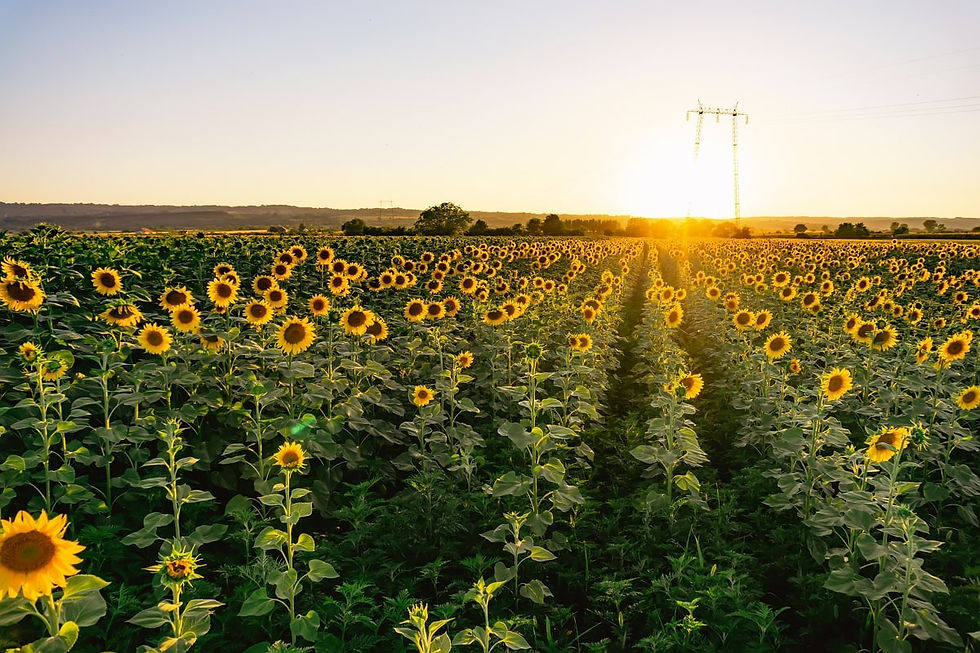Understanding Bean Production in Argentina:
- Milena González

- Aug 22, 2024
- 3 min read
Updated: Aug 23, 2024

Challenges and Opportunities
Beans are one of the most widely cultivated varieties of legumes globally. Major producers include India, Brazil, Myanmar, the United States, China, Argentina, and Canada, with these countries alone accounting for approximately 50% of global production, averaging 700 kg/ha.
In Argentina, bean production primarily occurs in the Northwest (NOA) region, especially in the province of Salta, which is the largest producer nationally. In the northern areas, white beans (alubia) are predominantly grown, while mung beans, red beans, and black beans flourish in the southern regions. Other provinces such as Tucumán, Santiago del Estero, and Catamarca focus more on black bean cultivation, with Córdoba, Santa Fe, and Chaco contributing to production, albeit to a lesser extent.
Challenges Facing Argentina's Bean Production
Bean production in Argentina faces several challenges. Aside from fluctuations in international market prices due to immigration from Latin American countries, which has led to the incorporation of traditional foods into local diets — with Argentina being a price setter for white beans — there are other factors we need to consider.
Interestingly, beans account for a minimal portion of the Argentine diet compared to other foods. However, there has been an increased recognition of legumes in recent years, leading to significant development in flour production. The primary market for beans remains export, with key destinations including Brazil, Mexico, Cuba, and Venezuela.
Recently, European countries such as Italy, Spain, and France have begun to play a significant role in the market. Italy, in particular, hosts the largest canning facility in Europe, which re-exports canned products to various countries within the European Union.
Various regulations on pesticide and herbicide applications have been established to facilitate entry into the European market, where pre-export laboratory tests ensure compliance with these regulations. Market access is crucial, reinforced by trade and diplomatic agreements that enhance Argentina's participation in the international arena.
Pricing and Market Dynamics
Typically, the price of beans is closely linked to supply and demand. However, actual pricing is determined by production output, considering the area planted, yield rates, and climatic conditions during the growing season. Constant monitoring of internal logistical pricing fluctuations is critical, as rising tariffs can lead to inflated prices, making Argentine beans less competitive internationally.
For the 2024 harvest, Argentina produced approximately 200,000 tons of beans, with black beans constituting 50% of this figure. This harvest has been characterized by significant quality deviations, influenced by the ongoing El Niño phenomenon, which brings heavy rainfall and higher-than-average temperatures.
Climate Challenges Impacting Production
The year's climatic conditions have posed multiple challenges. At the beginning of the year, numerous regions faced temperatures exceeding 36 degrees Celsius, particularly in the north, compounded by a lack of rainfall.
The optimal temperature range for sowing, germination, flowering, and plant maturity is between 20 and 29 degrees Celsius. Beans are sensitive to water deficiency, especially during critical growth periods, resulting in a noticeable drop in yields. Conversely, excessive rainfall is rare during the planting period.
Irrigation Scheduling for Optimal Growth
Proper irrigation is key to successful bean cultivation. Here’s a suggested irrigation schedule:
Growth Phase:
First trifoliate leaf: 22-25 days after planting
Floral bud stage: 36-40 days after planting
Flowering Phase:
Start of flowering: 47-52 days after planting
Full flowering: 58-63 days after planting
End of flowering: 70-76 days after planting
Maturation Phase:
Pod formation: 82-87 days after planting
Green pod: 94-100 days after planting
Ripe pod: 106-110 days after planting
The Impact of Frost and Quality Concerns
The 2024 harvest was notably impacted by frost, particularly in June and July when most beans are harvested, especially white, red, and black beans. Bean varieties such as Adzuki and mung beans encountered issues mainly from rainfall, resulting in a higher percentage of oxidized grains, which visually appear gray rather than the characteristic bright colors.
Beans are particularly susceptible to frost, negatively affecting germination and grain quality, as the plants cannot regenerate new growth once damaged.
Market Outlook and Future Trends

Estimates indicate a loss of about 30-40% of the harvest, making it challenging for exporters to fulfill contracts with overseas clients and driving up domestic market prices, often exceeding average export values. It's important to note that not all exporters are producers and must acquire goods from producers for export.
In recent weeks, the market has shown limited availability of high-quality beans, with many affected by frost. Producers are likely to reserve compliant stock for next planting rather than selling. Price trends do not indicate a downward movement; instead, they seem to have plateaued, with external competitive prices from other producing countries (e.g., Canada, Mexico, Brazil) also influencing the dynamics. In particular, Canada is a significant consumer and exporter of black beans, while Egypt has emerged as a key player in the white bean market in the past year.

- By Milena González
Procurement Analyst





إذا كنت من محترفي التقنية، فـ Sigma4PC هو وجهتك.